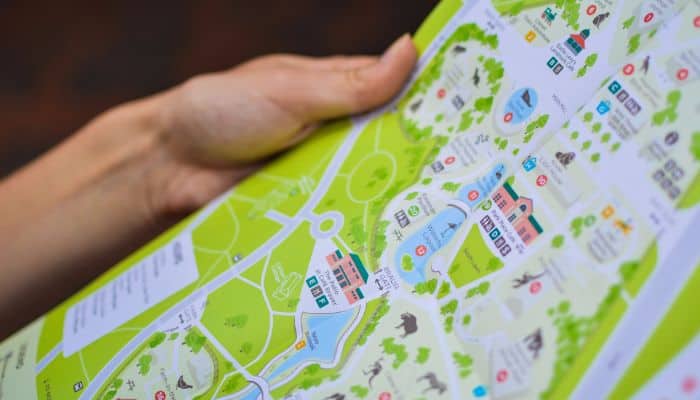How to ask directions in French
Navigating a new city can be a challenge, especially if you find yourself lost without your smartphone. Understanding how to ask for directions in French is essential when visiting French-speaking areas, as you may encounter situations where technology fails you. Being prepared can make your experience smoother and more enjoyable.
To communicate effectively in French, you will learn polite ways to approach others and gather the necessary phrases and verbs for asking for directions. This knowledge will empower you to seek assistance confidently, ensuring that you can find your way, even in unfamiliar surroundings.

1. How to approach people politely
Firstly, when seeking help, start with a friendly greeting to show respect. You can say:
- Bonjour Madame / Monsieur – Good morning Madam / Sir
- Bonsoir – Good evening
- Excusez-moi – Excuse me (formal)
- Excuse-moi – Excuse me (informal)
- Pardon – Pardon / Sorry
Always use s’il vous plaît to ask for directions formally. This approach makes your request more polite and increases the chance of a helpful response.
Remember that the most polite tense to use in these questions is the conditional.

2. Phrases to Ask for Directions
2.1 Basic questions for directions
When you need help finding a place, it’s effective to directly ask about the location. Here are some simple questions to consider:
- Excuse me, where is the Eiffel Tower, please?
- Can you tell me how to get to the nearest supermarket?
- Where is the closest bus stop?
- Excuse me, is there a café nearby?
- Can you show me where the library is?
Using clear intonation helps signal that you’re asking a question, making it easier for others to assist you.
2.2 Additional questions to ask your way
As you gain confidence, you can start asking more detailed questions about directions. You can choose to ask either open and closed questions as follows :
Closed questions :
- Est-ce que le bus 34 s’arrête ici ? : Does the bus 34 stop here ?
- Est-ce que l’hôpital St Louis est loin d’ici ? : Is the St Louis hospital far from here ?
- Savez-vous s’il y a un distributeur dans le quartier ? : Do you know if there’s an ATM in the area ?
Open questions :
- Excusez-moi, pour aller à l’Opera Garnier ? = Excuse-me, to go to the Opera Garnier ?
- (Pourriez-vous m’indiquer/me dire) comment aller à l’aéroport ? = (Could you indicate/tell me) how to go to the airport ?
- Quel est le meilleur chemin pour aller à Vincennes ? = What’s the best way to go to Vincennes ?
- Où se trouve la gare Du Nord ? = Where is the Gare du Nord ?
- A quelle distance est le métro Rivoli ? = How far is the metro Rivoli ?
Note : To be as precise as possible, don’t forget to review the French prepositions of place.

3. Useful verbs for directions
At last, once you have successfully asked for directions, comes the challenging part: understanding the answer you get. So here you have a list of verbs we frequently use when giving directions :
- Aller = to go
- Conduire = to drive
- Continuer = to continue
- Entrer = to enter
- Tourner = to turn
- Marcher = to walk
- Monter/Descendre = to go up / down
- Passer = to pass
- Prendre = to take
- Se déplacer = to move / to get around
- Traverser = to cross
- Voyager = to travel
Finally, one more phrase I hope you won’t need much “être perdu(e)” which means to be lost.
Tip : for more mouvement verbs, feel free to check the article : Rentrer, Retourner and Revenir.

In conclusion, asking for directions can be a great way of practicing French with a native speaker. That way, you will improve your conversational and listening skills.
Make sure to contact me for tailored French courses or for any further questions you may have. A bientôt!



Comments are closed.